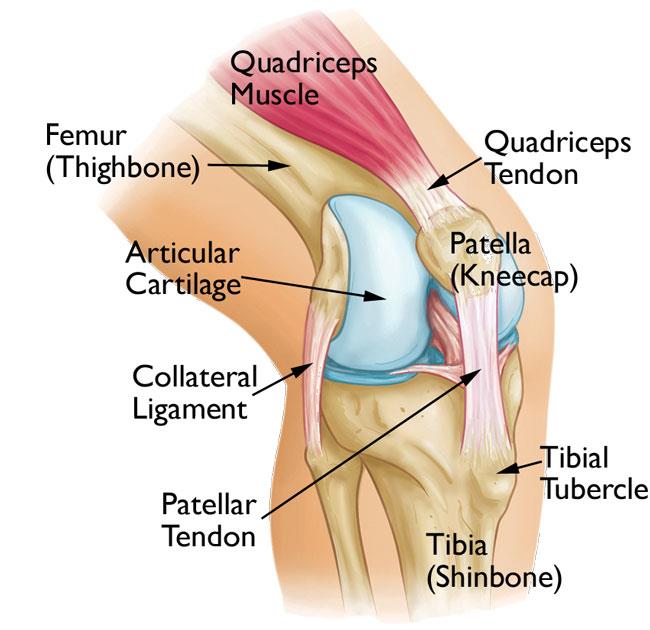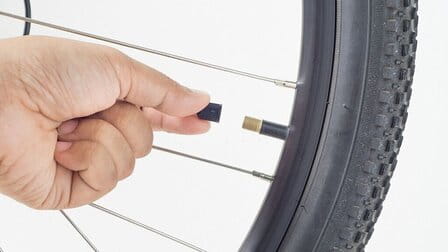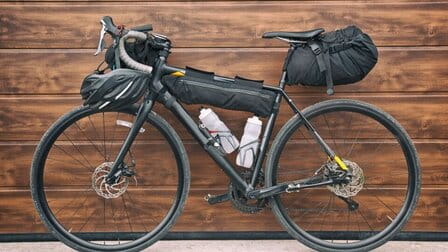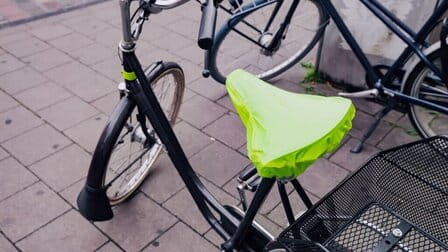Bicycling is often considered to be a relatively low-impact activity, yet the long hours spent in the saddle can nevertheless result in some serious issues and injuries. Nothing is more frustrating than knee discomfort, which may appear out of nowhere and prohibit you from riding pain-free if it isn't addressed.

As you increase the distance or intensity of your cycling, you put more strain on your muscles and tissues in your legs, which might lead to knee pain. When you pedal, your knee is subjected to a great deal of strain, and over time, it can get inflamed in a variety of ways. To keep your knees strong, you'll need a proper bike fit and the correct equipment. Treatment and prevention of knee pains are covered in this handbook.
1. Pain in the front of the knee

Saddle height or posture is commonly to blame for anterior knee discomfort around the patella. The quadriceps muscles link to the shins at the kneecap joints. For example, your knee may be bent too much when you are pedaling if your saddle is too low. This might create discomfort in your kneecap's tendons. Too lengthy crank arms might also cause this problem. There is a possibility that the saddle has to be raised if you have pain in your knee, but don't make any radical changes or you risk injuring other tissues or tendons by doing so.
If saddle height isn't the problem, your saddle position might be. The pedal stride can be stretched if your saddle is set far forward. To adjust the fore-aft saddle set, put your foot at the 3 minute mark on the pedal. Ideally, the front of your knee should be parallel to the pedal spindle at this moment. These guidelines are useful, but they do not take into account the differences in body shape and flexibility among people.
On the other hand, riding excessively fast, especially while rising and sprinting, might induce knee discomfort in the front. Knee discomfort can also be caused by tight quadriceps or IT bands. With too tight cleats, you also put much strain on your knees.
2. Pain outside the knee

Because of your cleat position, you're likely to have knee discomfort on either side of your kneecap. A good alignment of the cleats might take some time. If you're experiencing knee pain, change your cleat position gradually. On the other hand, you can select cleats that have more float, allowing your foot to slide around more easily on the pedal, rather than being restricted to a smaller position.
A tight iliotibial band (IT band) can also produce lateral knee discomfort. A tight or stretched IT band can produce a severe discomfort on the outside of the knee where the band meets the tibia when it is tight or strained. The IT band runs down the thigh, from the groin to the hip. Inflammation can be reduced by rolling, massaging, and icing the IT band.
3. Pain inside the knee

Inside-knee pain is similar to outside-knee pain in that your cleat position may be to blame for the discomfort. A smooth knee track is desirable during the pedal stroke, as opposed to an out or inward tracking knee. Also, the Q-factor, or how far apart your feet are horizontally, could be a major reason for your knee discomfort. There are two ways to change the Q-factor on your pedals: cleat position and spindle length.
4. Pain in back of the knee

Discomfort at the back of the knee is less frequent than pain in the front of the knee, but it can still be a concern. Your saddle would be so high and far back. As a result of burdening your knee during your pedal stroke, you may cause back pain. In addition, tight quads can lead to knee discomfort because of the way they wrap over the knee.
5. Several ways to treat your knee pain after intense riding
In order to treat pain effectively, a well-trained pain expert uses a holistic, natural approach. Prior to surgery, you should consider non-invasive or modest therapies that address the source of your discomfort. Find a doctor that takes a holistic approach to health care. Before committing to more severe therapy, you want to consult with those who will take the time to look at a wide variety of choices.
Physical therapy

In almost every incidence of knee discomfort after riding, a doctor will first prescribe physical therapy to help alleviate the knee pain. A good method to retrain your knee and heal damage caused by abuse and ordinary wear-and-tear is to do this.
You can heal some of the injuries to your knee by extending and strengthening the muscles around it. A rigorous bike exercise will also help you to avoid future injuries.
In addition to the physical therapy, you'll need to do some stretching at home. Maintaining a regular regimen is crucial for long-term healing and prevention.
Chiropractic

Knee discomfort after riding can be treated with chiropractic treatment. As a chiropractor, you'll receive joint manipulations and massages to help enhance your joint alignment.
A chiropractor's belief is that spine manipulation may be used to treat a wide range of conditions all throughout the body. So, most chiropractors will want to work on this region as well, so that the body is aligned properly from head-to-toe.
To get long-term pain relief, you'll need to complete some homework, similar to physical therapy. Stretches will likely be prescribed by your chiropractor, and they will be done daily in your home.
Active release technique

Active Release Methods (ART) are trademarked soft massage techniques that use movement to manipulate soft tissues. The tension of your afflicted muscles, ligaments, and tendons will be assessed by experts who are trained in this method. From there, they start applying pressure as you do specific motions that allow your muscles to shorten and lengthen.
Knee injections

Corticosteroid and hyaluronic acid are the two most frequent kinds of knee joint injections. Additionally, both of these treatments are less invasive options for pain relief and irritation reduction. Corticosteroid injections are used to relieve the irritation in the knee joint. Injections with hyaluronic acid offer lubrication and act as a shock absorber. Since hyaluronic acid is already prevalent in our joints, certain occurrences of knee discomfort are thought to be the consequence of this material breaking down.
In either case, you may anticipate to experience a considerable improvement in knee pain within 24 to 48 hours after your injections. There is usually pain alleviation for up to 2-4 months after the surgery for most individuals. In certain cases, the minimal nature of the technique allows patients to have 2 - 3 repeat treatments each year, according to some research.
6. Knee Pain Prevention
Warm Up

Stretching

Build mileage up

Bicyclists who suddenly increase their mileage may have knee discomfort. Plan a large ride, bike excursion, or riding week in advance and don't start it right away. To avoid knee discomfort, allow your body time to acclimatize to the increased riding hours in spring or after a hiatus. It's possible to alter things like your position before the discomfort becomes a problem if you ramp things up carefully.
Get for yourself a bike fit

Conclusion
Although cycling knee pain is annoying, it is by no means a catastrophe. The most common cause of injuries are overuse. No harm is done, and riding with knee pain will not damage your knees. Within the next couple of weeks, the discomfort should subside. Even after a few weeks, there are a few things that might help you recover.
The most common reasons for knee discomfort from cycling include an improperly fitted bicycle, a lack of cycling fitness, and riding too far, fast or heavy. 90% of the time, if you adjust or change these elements, you will heal. Don't be afraid to move around and don't give up hope for a speedy recovery!













